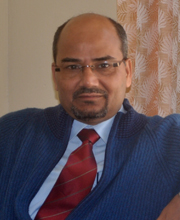Research on the Mechanism of Herdsmen Participating Co-construction in Sanjiangyuan National Park
Ting Zhao and Tian Tang
College of finance and economics, Qinghai University, XiNing, China
Abstract—Sanjiangyuan National Park is located in an important geographical position in China.It makes great contribution to maintaining national ecological security and developing the middle and the lower reaches of the river,and at the same time it is one of the key regions to deal with climate change globally.Nowadays,national park destruction in which community co-management has basically become the consensus of most countries around the world.National park is a kind of protected area management model which has been verified by the world and can effectively realize protection and development. In the background of national park pilot, in 2015, after the approval of the establishment of Sanjiangyuan national park, it has a great impact on the sustainable development of the region. In order to better promote the participation of pastoralists in the construction of sanjiangyuan national park, it is particularly important to explore the mechanism of participation and coconstruction of pastoralists in Sanjiangyuan national park. Based on the research of several literatures and several research methods in recent five years, this paper tries to propose the co-construction mechanism analysis aiming at the current situation of sanjiangyuan national park.
Index Terms—herdsmen, co-construction, sanjiangyuan national park
Cite: Ting Zhao and Tian Tang, "Research on the Mechanism of Herdsmen Participating Co-construction in Sanjiangyuan National Park" Journal of Advanced Management Science, Vol. 6, No. 3, pp. 179-181, September 2018. doi: 10.18178/joams.6.3.179-181
Cite: Ting Zhao and Tian Tang, "Research on the Mechanism of Herdsmen Participating Co-construction in Sanjiangyuan National Park" Journal of Advanced Management Science, Vol. 6, No. 3, pp. 179-181, September 2018. doi: 10.18178/joams.6.3.179-181
Previous paper:Applying Lean Thinking to Smart Cities: Environmental Sustainability and Resources Waste Reduction
Next paper:Last page
Next paper:Last page
